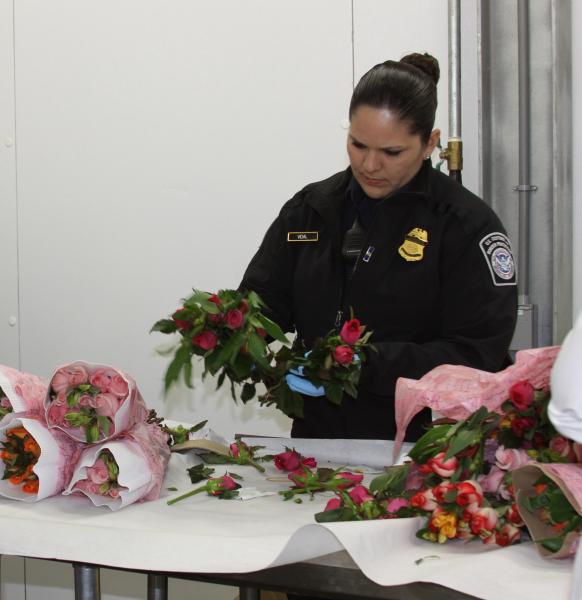LAREDO, Texas – As Valentine’s Day rapidly approaches, U.S. Customs and Border Protection’s highly skilled agriculture specialists across more than 328 ports of entry continue to dutifully examine hundreds of millions of arriving cut flower stems to ensure that plant diseases and plant pests are detected and stopped from being introduced into the United States where they could cause harm.
At international ports of entry, land borders and mail facilities, CBP agriculture specialists are the front line in the fight against the introduction of harmful insects and diseases into the United States.
“CBP agriculture specialists at Laredo Field Office ports of entry continue to play a critical role in preventing invasive plant pest and diseases from entering the U.S. as they encounter millions of cut flower stems in advance of the Valentine’s Day holiday,” said Director, Field Operations Randy J. Howe, Laredo Field Office. “These inspections help protect American agriculture and preserve the economic security of the nation’s floral industry as well.”

shipment for pests at Laredo Port of Entry.
At South Texas area ports of entry, the most commonly prohibited flowers and plant materials are chrysanthemums and choysia (an ornamental filler). These items are not allowed to enter the U.S. from Mexico because they are known to harbor harmful pests and diseases.
Individuals purchasing floral arrangements in Mexico for transport to the U.S. should advise their florist accordingly so prohibited plant species will not be used in the arrangement. And as a reminder, all agricultural items should be declared upon entry. For more information regarding bringing agricultural items, consult this link.
CBP at Laredo Port of Entry processed more than 44.4 million cut flower stems during FY 2019 and is the eighth largest field location by volume for cut flower importations nationwide.
Recent B-roll footage of CBP cut flower inspections at a U.S. port may be found here.


